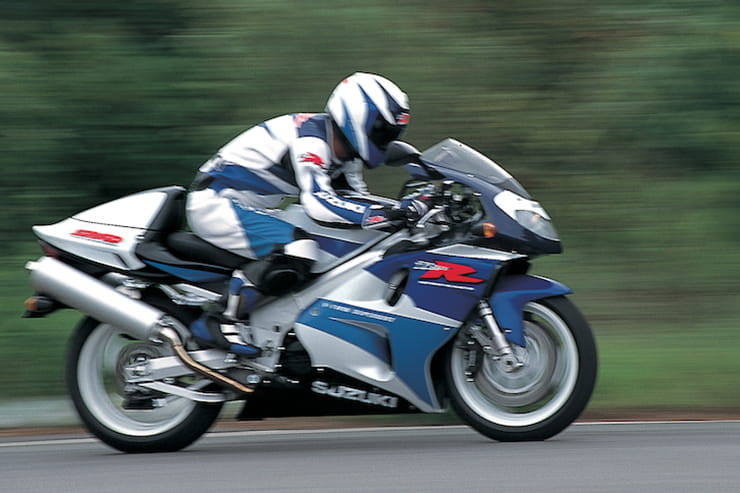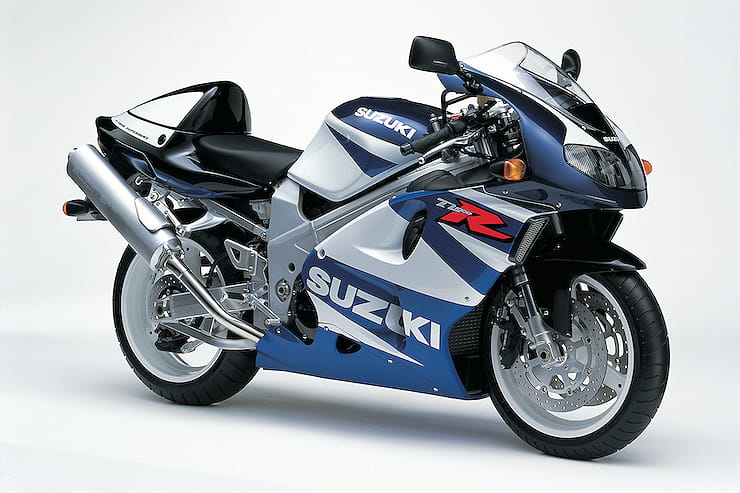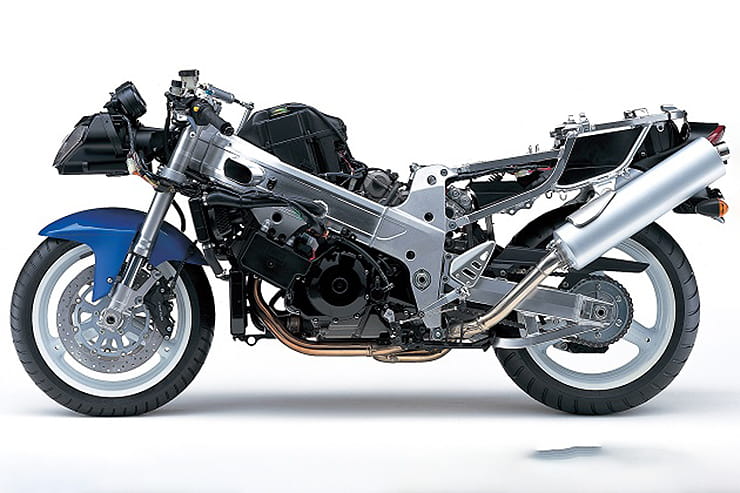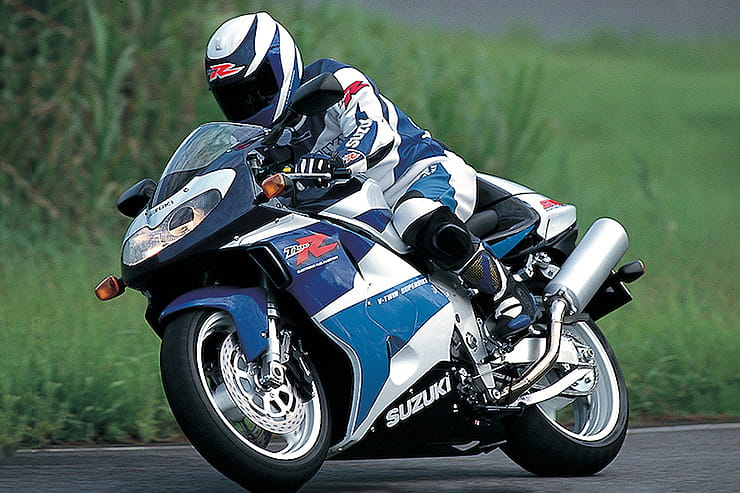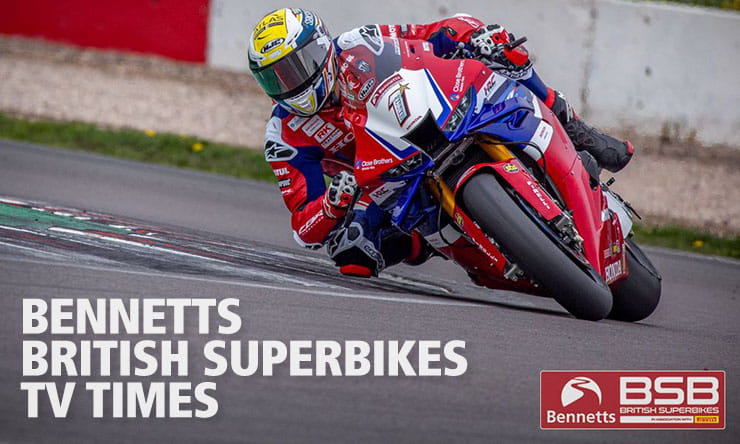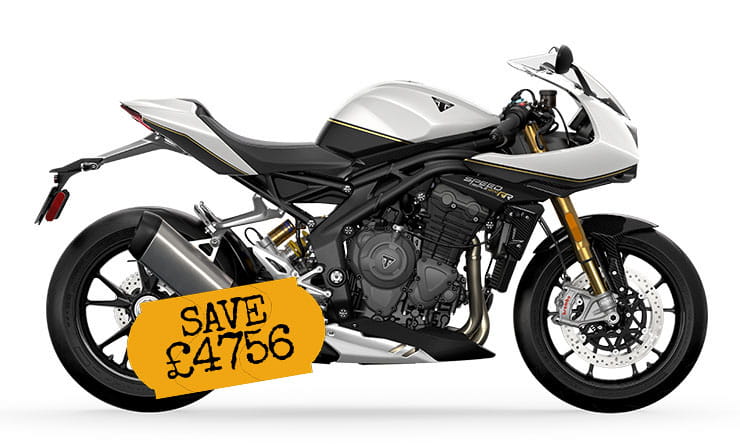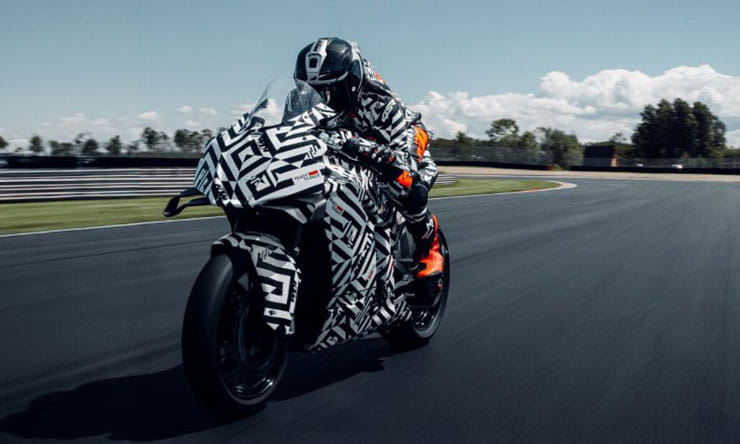There once was an ugly duckling, as the song goes, and if you're looking for the motorcycling equivalent, you really don't need to look much further than 1998's Suzuki TL1000R. It's almost as though Suzuki's stylists thought, 'We have to design something to compete visually with the Ducati 916, universally acclaimed as the most beautiful motorcycle on the market. Its going to be tough, but let's give it a shot.' Then, after a few days of focus groups and abortive styling exercises, they sat down and said, 'You know what? Buggerit – it's just not possible, so let's go the other way instead.' Well, they succeeded – with its beaky nose, wide-mouth-frog headlight, bulky front fairing (it's a twin for heaven's sake - it should be slim!) and that bulbous and strangely extended tail, few bikes divide opinions like a parked-up TL-R (although to be fair they look a lot better on the move). None of that would have mattered if it had lived up to its promise – openly stated by Suzuki at the bike's press launch – of taking on Ducati where it mattered: on the track.
It didn't. It couldn't.
On the road it had more power and torque than the Duke and could grunt its way clear on every corner exit, but the engine proved hard to tune for racing, and although Suzuki produced a hugely expensive race kit (or rather, paid Yoshimura to produce one) they never fielded a TL-R in World Superbikes, preferring to stay with their proven GSX-R750 inline four. So, without the racing kudos to overcome its challenging looks, the TL-R never really caught on. It didn't help that it was launched at the same time as Yamaha's game changing R1, and suddenly inline fours were fashionable again. Colours schemes apart, the R was never updated, and was quietly dropped from the range at the end of 2002 (although some dealers were still trying to shift stock well into 2004). Its passing wasn't mourned.
But that was then. Twenty-odd years later, the TL-R doesn't look quite as mad as it did then, and with crowded roads and speed cameras, pure speed takes second place to grunt out of corners for most road riders, so these days the R looks a much better bet.
Suzuki TL1000R (1998–2002) Price
In early 1998, £8574 would have been enough to get your hands on a shiny new TL1000R. Well, so long as you didn't mind a bit of a wait (last-minute production glitches meant the first bikes didn't hit the UK until late spring). That was about £300 more than a Honda VTR1000 firestorm, but more than three GRAND less than a Ducati 916 Biposto (although the 916 would look like the better investment nowadays...). To put those prices in perspective, a Honda VFR800 was £8675 and Suzuki's own GSX-R750 was a walloping £9724.
These days tidy-looking TLs start at just over two grand for private sales, but there's a big step up price-wise if you want to buy from a dealer, with few showroom examples with less than four grand asking prices.
Power and torque
Suzuki claimed 135bhp for the TL-R, but in reality, it got nowhere near that – a healthy one would dyno at around 120-125bhp. To put that into context though, the 916 and Honda's VTR Firestorm could only manage about 105bhp, so the TL-R had an immediate advantage. In fact, up to around 6000rpm, all three made pretty much the same power (the Ducati was actually the best of the bunch below 4000rpm, but at the expense of shaking your fillings out). From 6k though, the Ducati dipped a bit before surging at the top end, the Honda kept going strong before tailing off after 8k, while the Suzuki just kept building strong power all the way through, peaking at around 9000rpm before tailing off gently towards the redline at 10,500rpm. Critics complained at the time that it had lost the instant excitement of the previous year's TL-S, which had a reputation for the power coming in with a bang, sending the front wheel skyward (often with unpredictable results). The R's delivery, though, may have been less spectacular but it was a lot more effective – on road or track it just built speed relentlessly and efficiently. The only real criticism as a road engine was snatchy delivery lower down, around 3000rpm, which made it a bit of a pain in traffic. That can easily be cured with a Power Commander and a bit of dyno time though.
Engine, gearbox and exhaust
Reliable – very reliable – in normal use. You'll hear the odd report of head gasket failure, but it's not that common. The gearbox is ok – not as slick-shifting as the GSX-Rs of the era, but positive enough. Leaks from the gear lever input shaft seal are common, but easy enough to fix.
If you’re going to be doing your own servicing, you'll be well advised to get your hands on the full factory service manual. You can download it (free) from here.
Suzuki TL1000R (1998–2002) Economy
Oh dear. The TL1000R was always a bit of a thirsty beast – easy to get it dipping down towards 30mpg if you're heavy handed, and especially if you're hitting the track. Even with a bit more restraint, few owners report averages of over 40mpg on a regular basis, and high 30s is more realistic. On top of that, the claimed fuel capacity is just 17 litres, although it's not always easy to squeeze that much in...) and the fuel light (assuming it's working properly) comes on with around three litres remaining. So, do the sums... Assuming you've got the full 17 lires on board, a good thrash will see you staring at a blinking fuel light with around 90 miles on the trip meter. If you've not managed to squeeze the last litre or so in at the last stop, it could have lit up way before that... Even if you resisted every impulse to wind the throttle on hard, and got to the heady heights of 40mpg, you'd still be looking for fuel after 120 miles, and with just 25 miles to find it...
Handling, suspension, chassis and weight
There's something a bit odd about the TL-Rs handling. Not necessarily in a bad way, but it's got a few characteristics that seem at odds with each other. The short wheelbase and tight steering geometry point towards quick steering, potential instability and a racy, front-end biased feel. But excess weight, odd tyre sizes and an over-enthusiastic steering damper conspire to make it stable, a bit ponderous to turn, and with a lack of feeling from the front tyre, especially turning in as you release the brakes. Fortunately, that's pretty easy to sort out – dropping the yokes a few mm over the forks and raising the rear slightly helps sharpen things up without losing ground clearance. Many owners recommend going down to a 180-section rear tyre from the original 190/60 – again, it just tightens up the feel. Some go further and fit the 5.5in rim from a GSX-R600 SRAD, which changes the profile for the better. You could also try ditching the steering damper – it'll vastly improve the feel of the bike at low speed, but you may (it varies from bike to bike and road to road and rider to rider...) find it gets to be a bit of handful on bumpy roads. So, is that notorious rotary rear damper as bad as legend, has it? No, is the short answer. In fact, it never was. The original TL1000S version wasn't great, and didn't contain enough oil to cope with hard use – it overheated. But problems on the road were more likely to be caused by running the drive chain a little too tight, so it wouldn't let the suspension move properly. The R's damper is larger, contains more oil and has better quality damping, and generally works better. Which is not to say it can't either be improved (just getting it rebuilt with better quality oil would make a big difference) or replaced – various firms make bolt-on conversions to conventional linear dampers. The most cost-effective option is from hagon-shocks.co.uk, who can supply an adjustable replacement shock for £299.50, or with remote hydraulic adjuster for £424.50. While you're delving around down there, check the frame around the shock mountings - cracks aren't common, but they're not unknown either, and broken bolts are also well-documented. At the front, again the forks can be improved with a rebuild/service revalve and fresh oil. If you want to upgrade, then Hayabusa and GSX-R1000 forks can be persuaded to fit without too much grief.
Suzuki TL1000R (1998–2002) Brakes
Ah yes, six pot brake calipers – must-have features of the late 90s and early 00s. In theory, more power from more pad area equals better and more controlled stopping. In practice, it doesn't work – all you get is more weight, more complication and less feel. You also need to be obsessive about maintenance to keep them working anything like properly. Fortunately there's a solution – four-pot Nissin calipers from some GSX-Rs and Bandits will fit straight on and improve power and feel while also being more reliable and easier/cheaper to maintain. some other Nissin four-pots will also fit if they have the same 90mm bolt spacing, but might need spacers. You'll probably also need new banjo bolts, as they're not the same thread pitch as the standard TLR ones. The only problem with the Bandit/GSX-R route is finding a pair in perfect condition. If you've got a few quid spare, another option is brand new later-model Nissin calipers – a straight bolt on fit and available for £445 a pair (including full set of pads, and shipping) from motorcyclebrakeupgrades.co.uk
Comfort over distance and touring
It's not the most comfy riding position you'll come across, but for a sportsbike it's pretty roomy – far more accommodating than a 916 or a Honda SP-1, for example. With the poor tank range you'll never be riding more than a couple of hours without a break anyway, so it's not really an issue. Remove the strange seat hump and the pillion perch is also pretty good by sportsbike standards – or at least it would be if the pegs weren't so high that any pillion over about five years old and/or three foot tall will have their knees up by their ears. So, stick to riding solo and that big seat makes a good platform to bungee a big bag on there for weekends away. The high standard exhausts mean throwovers are ill-advised though. There's also a surprising amount of space under the seat for storage.
Rider aids and extra equipment / accessories
Nothing to see here, move along please. The TL is strictly old-skool – throttle, clutch and brakes, something to tell you how fast you're going and somewhere to sit. Few TLs end up adorned with loads of accessories. The exception is aftermarket exhausts – some of which are ear-splittingly, car-alarm-bothering loud. Always try and get the standard pipes as well – with values going up, standard exhausts will become increasingly sought-after.
Odds and sods
Electrics are generally not too troublesome, although some owners complain about annoying misfires and failures in wet weather, and there have been some issues with looms failing near the headstock and ignition switch (probably from incorrect routing). With age there's also the potential for corroded contacts and poor earths, so it's well worth taking a very careful look at every connection, fixing any faults and protecting connectors with electrical grease. While the fuel tank is off, check the gasket between fuel pump and tank – leaks are common, probably due to high ethanol content in modern fuel hardening the gasket material. If bolts have been over-tightened in a misguided attempt to 'cure' the leak it can distort the tank and fixings, meaning even a new gasket won't fix it. There is a fix for that using Viton sheet to make extra gasket layers (see tlplanet.com). It's also worth doing a proper health check on the charging system as you need a willing, fully charged battery to turn those big pistons over from cold – try and start with a weak battery and you can damage the starter clutch if it kicks back.
Suzuki TL1000R (1998–2002) verdict
Unloved when it was new, the TL1000R has aged better than anyone expected. These days it doesn't matter that it never matched its Ducati-beating, race-winning pre-launch hype – what matters is that it's still a seriously good road bike, with a great, punchy engine and (with a bit of sensible modification and set-up) good, stable handling. Because it remained unchanged through its model life, you're better off ignoring the age (and to a certain extent the mileage) and basing your buying decision on condition, history and whether any modifications actually enhance its abilities rather than just being purely cosmetic. The lack of updates also means spares availability is simplified, but being a Suzuki there are also lots of parts from other models that are either identical, or at least straight bolt-ons. You can find a lot of information on that and other TL-related topics at tlplanet.com. The forums at tlzone.net are also well worth a look.
Despite never being hugely popular, quite a few TL1000Rs were sold in the UK – around 2300 were official registrations, although quite a few also came in as parallel imports from the continent (you can usually tell an unmodified import as they have km speedos, as well as needing a beam deflector sticker for the MoT). Quite a few got scrapped early on as values dropped sharply enough to make cosmetic repairs un-economic, and there's still plenty of used mechanical spares out there, so running a TL shouldn't break the bank (well, aside from tyres, fuel and chains, all of which are short-lived...). And these days even cosmetics aren't such a problem – you can get a complete set of pre-painted bodywork from China for around four hundred quid, and the quality's surprisingly good.
There are quite a few TL-Rs out there for sale at any one time – mostly well cared for and with many of the bike's original foibles sorted. With values rising steadily, now's the time to buy – while they're still relatively cheap.
Three things we love about the TL1000R…
- The engine
- Always gets a reaction (even if it's not the one you might want...)
- Did we mention the engine...?
Three things we don’t…
- Titchy fuel tank (and thirsty motor)
- Six pot brakes
- A bit lardy
Suzuki TL1000R (1998–2002) spec
|
Original price
|
£8,574
|
|
Current price range
|
£2000-£4500
|
|
Capacity
|
996cc
|
|
Bore x Stroke
|
98 x 66mm
|
|
Engine layout
|
90° V-twin
|
|
Engine details
|
Liquid cooled, fuel-injected
|
|
Power (tested)
|
122bhp (91kW) @ 8800rpm
|
|
Torque
|
77 lb-ft (104Nm) @ 7500rpm
|
|
Top speed
|
167mph
|
|
Transmission
|
6 speed, chain final drive
|
|
Average fuel consumption
|
37mpg tested
|
|
Tank size
|
17 litres
|
|
Max range to empty (theoretical)
|
138 miles
|
|
Reserve capacity
|
24 miles (fuel light with 3 litres remaining)
|
|
Rider aids
|
Nada
|
|
Frame
|
Aluminium twin spar
|
|
Front suspension
|
43mm upside down forks
|
|
Front suspension adjustment
|
Preload, rebound and compression adjustable
|
|
Rear suspension
|
Rotary damper with separate spring
|
|
Rear suspension adjustment
|
Preload, rebound and compression adjustable
|
|
Front brake
|
320mm discs, Tokico six-piston calipers
|
|
Rear brake
|
220mm disc, Tokico two-piston caliper
|
|
Front tyre
|
120/X70 ZR17
|
|
Rear tyre
|
190/50 ZR17
|
|
Rake/Trail
|
23°/90.6mm
|
|
Dimensions
|
2100mm x 740mm 1120mm (LxWxH)
|
|
Wheelbase
|
1395mm
|
|
Ground clearance
|
120mm
|
|
Seat height
|
825mm
|
|
Kerb weight (approx)
|
227kg
|
Looking for motorcycle insurance? Get a quote for this motorbike with Bennetts bike insurance



